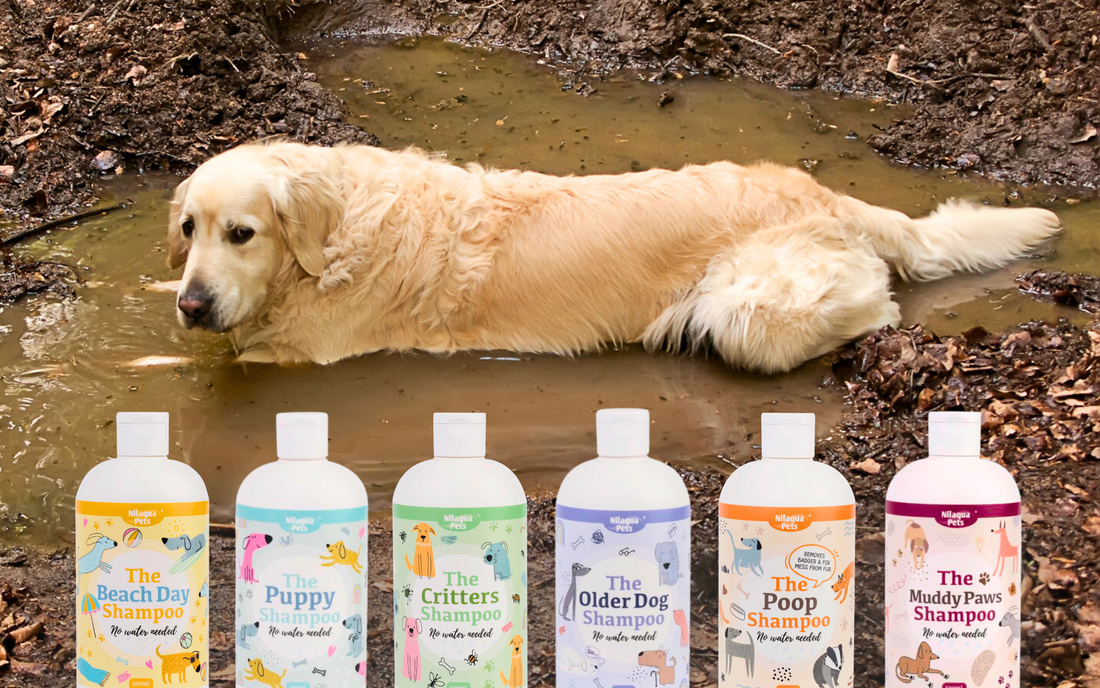Is it an allergy or sensitivity?
Similar to humans, dogs can also display signs of allergies or sensitivities to certain external factors, be it pollen, dust, mould, certain food, etc. When talking about allergies and sensitivities, most people will refer to allergies. However, allergies in dogs are actually quite rare and in most cases it is food sensitivity that causes issues for your dog. Let’s now look at each in turn.
Allergy
Allergy is caused by external factors (referred to as allergens), which initiate the immune system to ’over-react’. The allergens are usually some type of protein. These allergen proteins attach to antibodies in the body then to mast cells which are found throughout the body. Mast cells then release histamines which cause inflammation and symptoms of itching, redness and swelling. The most common symptoms include itchy skin and sometimes sneezing, coughing and runny nose. However, the symptoms can affect the digestive system as well, resulting in diarrhoea or sickness. The most common allergens are pollens, insects, dust mites, mould spores, shed skin cells, fleas or more specifically their saliva or medications. Insect bite allergy is quite common and it manifests in the same way as in humans, triggering an overreaction from the immune system. Such a response can be triggered by fleas, spiders, flies, bees, wasps, basically any insects that bite. When an insect bites a dog, most dogs experience localised itching. However, with constant scratching dogs might remove large amounts of hair or even skin, potentially risking a bacterial infection. In the case of severe itching, you can use calamine lotion or simply soak some oats in water, strain it after half an hour and dab the skin with the liquid every now and then. Alternatively, your vet can prescribe some antihistamines. Atopic allergy Atopic allergy refers to the tendency to produce an exaggerated immune response to otherwise harmless substances naturally found in the environment. The main allergens are pollen, grass, mould, dust and weed. When atopic dermatitis occurs, you will see your dog licking his feet, scratching the underarm area as well as rubbing his face to whatever he can to ease the itching. In order to identify the allergen, your vet will either do a skin test or a blood test and advise you to keep your dog away from the offending substance. Treatment can include any of the therapies below:
- Anti-inflammatory medication: Most often corticosteroids or antihistamines are prescribed. However, these drugs can have serious side-effects so it is important to do your research and make an informed decision to see if it is the best treatment for your dog.
- Medicated baths: Frequent bathing with hypoallergenic shampoo will soothe the itchy skin as well as get rid of the allergens which could still be stuck in the hair.
- Anti-inflammatory diet: Your vet might prescribe some specific food to your dog. However, it’s possible to make changes to your dog’s diet without the need to go down this route. The natural approach would incorporate plenty of safe veg and fruit in your dog’s diet, along with lots of oily fish (salmon, herring, anchovies, sardines, mackerel) rich in Omega 3 fatty acids. You might wish to find a reputable dog nutritionist to help you along the journey if you opt for this.
Contact dermatitis/allergy Dogs can also suffer from contact dermatitis upon coming into contact with certain substances, be it chemicals found around the house, grass, pesticides or bedding. Once the allergen is removed, the problem is usually resolved. Food allergy

Should your dog be allergic to certain protein types, the most obvious sign would be itching, diarrhoea, hives, excess wind, vomiting. However, food allergy can also manifests itself in respiratory problems, such as coughing or sneezing. Another tell-tale sign is recurring ear infection as well as itchy skin not reacting to steroid treatment or antibiotics. The only way to identify the allergen is to put your dog on an elimination diet. The most common allergens include:
- chicken
- beef
- dairy products (many dogs struggle to digest cow’s milk as they lack the enzymes need for digestion)
- fish
- eggs
However, dogs can be also allergic to plant-based sources such as wheat, corn, soy. However, it is less common so simply switching to a grain-free food will not resolve the issue.
(Food) Sensitivity
Whilst allergy can be triggered by a number of factors, sensitivity is triggered by excess exposure to a type of food. Food sensitivity builds up over a prolonged time before any signs can be spotted. The most common signs include vomiting, diarrhoea, gas, lack of appetite and weight loss, which is all due to your dog not being able to digest the allergen. It is possible to overcome sensitivities by following the elimination diet for dogs for a set of time before re-introducing common protein sources in order to identify the triggering food.
Elimination Diet for Dogs
It is a strict diet whereby you cannot cheat, i.e. your dog cannot have his favourite snacks or scraps from the table, if you wish to successfully identify the allergen. The owners (and all family members) therefore need to be 100% committed, but the good news is, the diet is not for the rest of the dog’s life! Basically all potential allergens are removed from the diet whilst the immune system is strengthened and the gut is supported. The practise involves 3 specific actions, often referred to as the 4Rs:
- Remove: Remove offending food, one at a time and note any changes. Both the elimination phase and the re-introduction can be quite lengthy, therefore it is best to keep a food diary for your dog, noting everything he eats and all his symptoms as well.
- Repair: Support the gut with glutamine and N-Acetyl-Glucosamine (NAC). Help the immune system with feeding your dog oily fish and veg and fruit rich in Vitamin C. You also need to consider any medications your dog is taking, again it is best to involve either your vet or a dog nutritionist.
- Restore & Replenish: This is the next step in supporting the gut – remember that 70-80% of the body’s immune cells are found in the gut, hence the importance of repairing the gut and restoring a healthy gut biome. In order to do this, probiotics have to be incorporated into the diet. If you wish to purchase supplements, you can do that but it is also easy to give your dog natural, unflavoured kefir and Greek yoghurt and the good news is, dogs absolutely love both. You can read more about Supplements for Dogs if you wish to go down that route.
How to do it? Start off by either cooking for your dog (makes digestion easier) or putting him on the raw diet and start him on some hypoallergenic, novel protein source, be it wild boar, rabbit, ostrich, kangaroo, venison or horse. Pick one and stick to it for 12 weeks (12 weeks is how long it takes for the body to get rid of previously fed food). After 12 weeks, introduce another novel protein source and stick to only that type of protein for a week or two. If your dog shows no allergic symptoms then you can safely feed him both protein sources. After a while you can re-introduce common protein sources, but only one at a time. So let’s say your dog is OK on venison and wild boar or even rabbit (which means any combination of them can be in the diet once they were individually vetted), however, you now want to test your dog on chicken. AT this point bring in the chicken, ideally in small quantities first. Feed chicken along the already vetted protein types for a week or two and check for reactions. If all is well, you can move onto the next possible allergen. As you can see the elimination and the the re-introduction can be quite lengthy but it is worth doing it right in order to help your dog live a better life.





